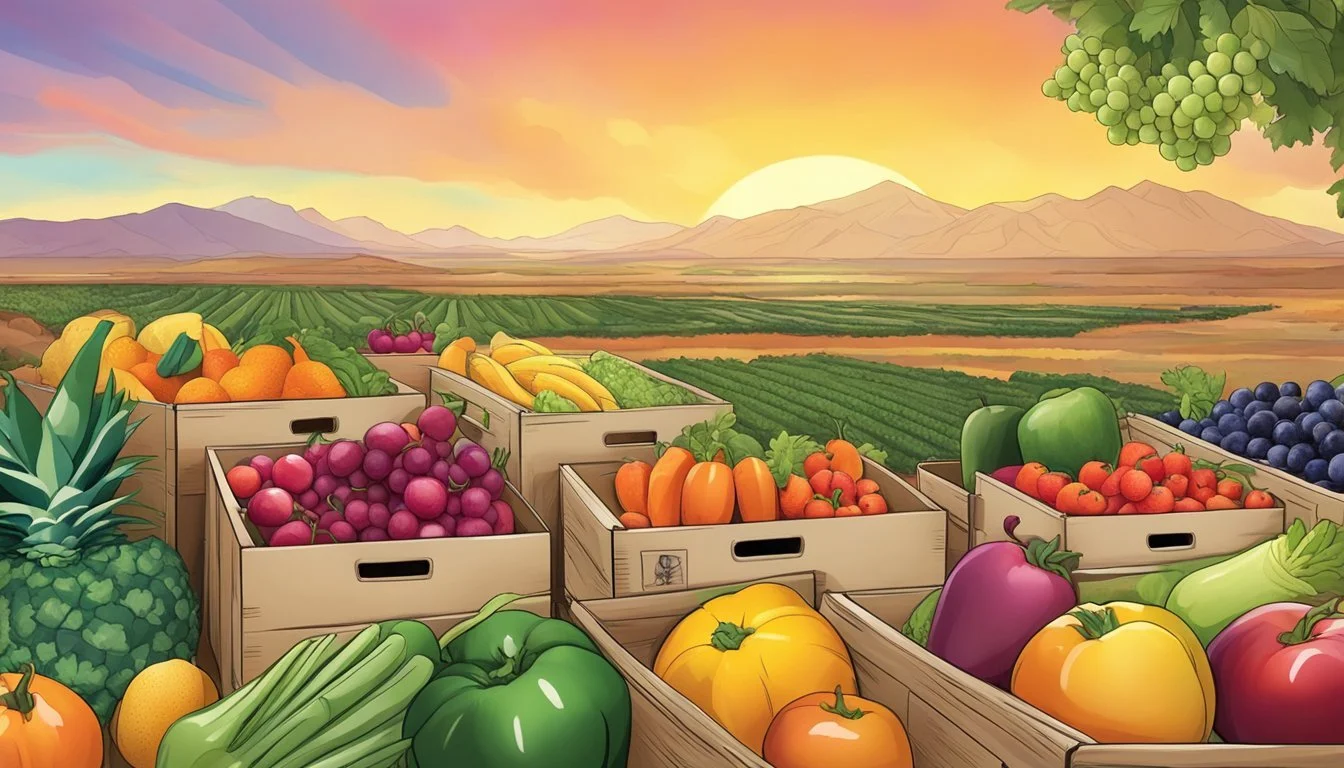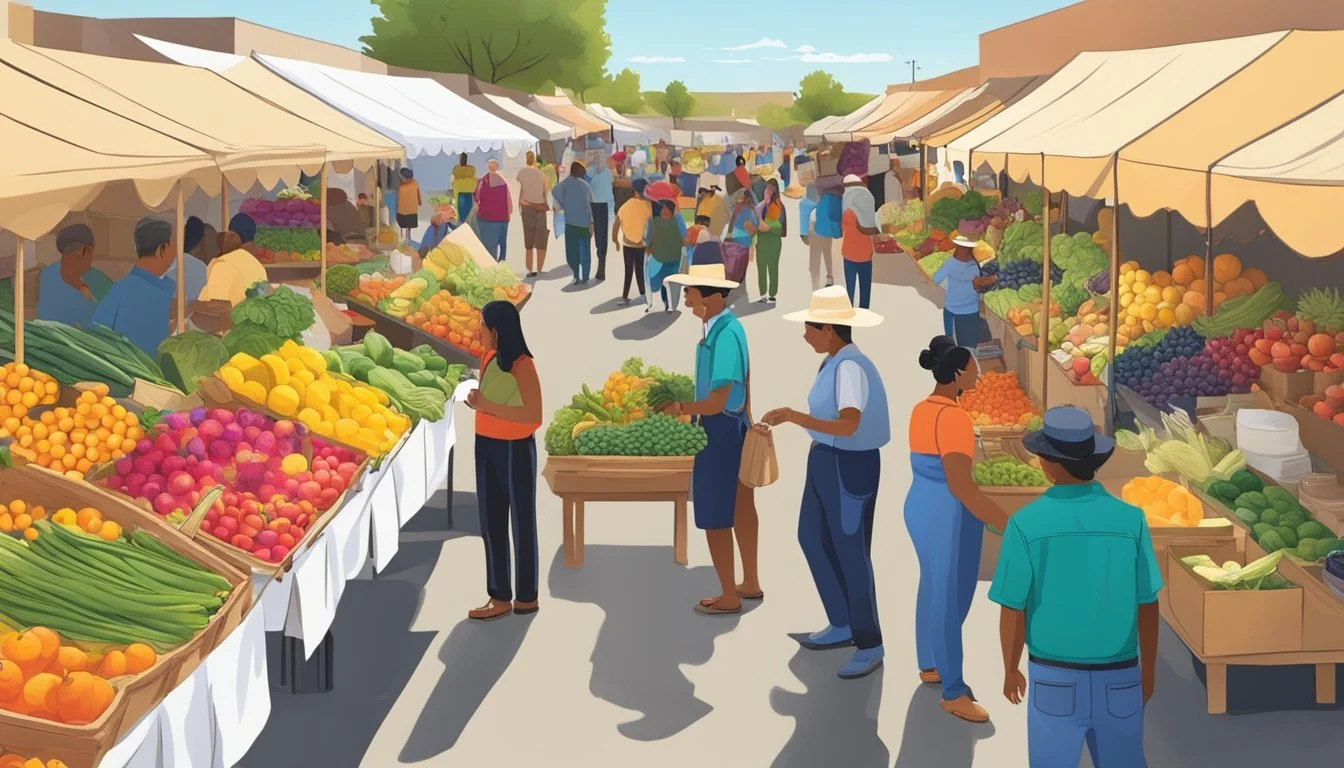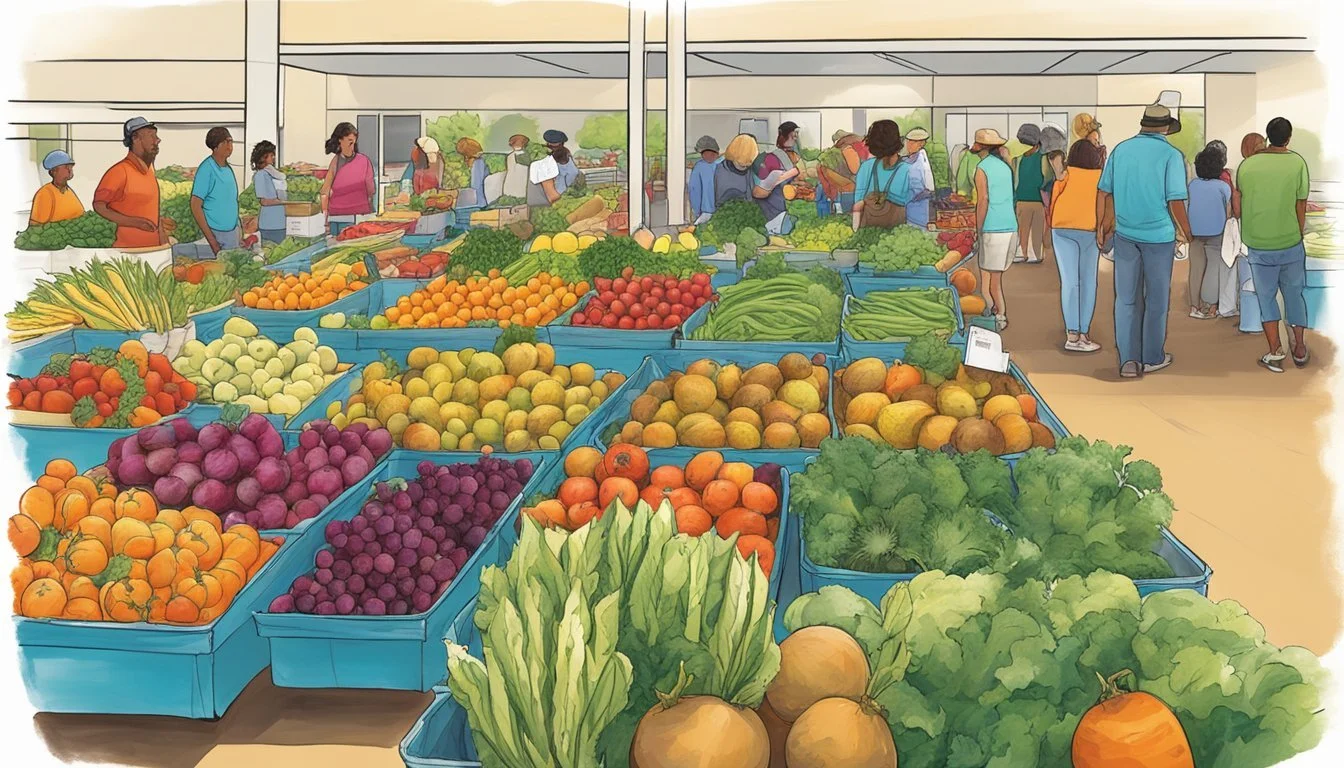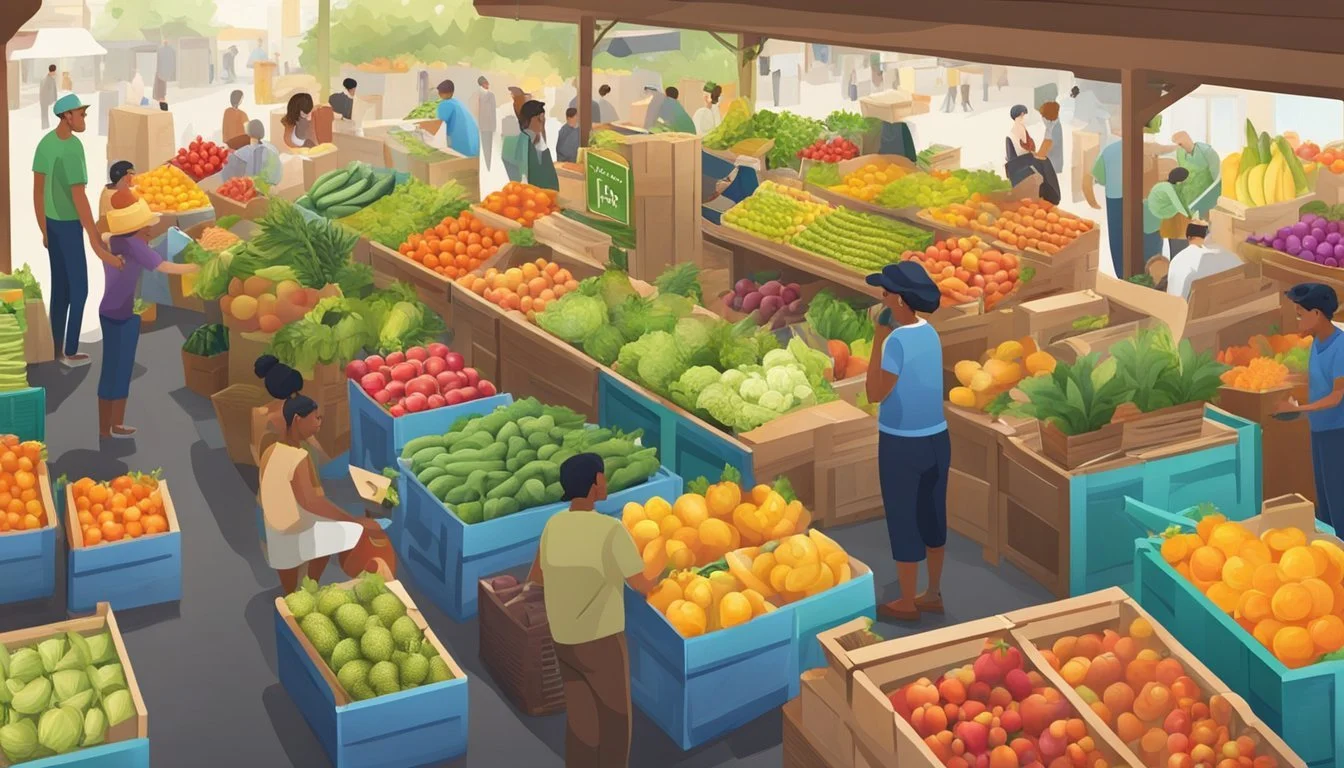Community Supported Agriculture (CSA) in Rio Rancho, NM
A Guide to Local Produce and Farms
Community Supported Agriculture, commonly known as CSA, is a growing movement in Rio Rancho, New Mexico that connects local residents directly with area farmers. In this model, community members purchase shares of a farm's anticipated harvest, providing farmers with upfront capital for the season's expenses. In exchange, they receive a portion of the farm's produce throughout the growing season, fostering a collaborative relationship between growers and consumers.
Loose Leaf Farm, Mesa Top Farm, and Beneficial Farms are just a few examples of CSAs in the Rio Rancho area that highlight the importance of such partnerships. These farms not only offer fresh, sustainably raised food directly to members but also strengthen the local food system. By partaking in a CSA, Rio Rancho residents support regional agriculture and gain access to nutritious, locally produced items, contributing to the health and resilience of the community.
CSAs in Rio Rancho operate with a variety of structures and distributions, yet all share the underlying goal of community engagement in local food production. They encourage a reciprocal commitment where consumers are not just buying produce but investing in the sustainability and success of local farming. This investment takes the form of education about seasonal eating, understanding the realities of farming, and building relationships rooted in food and agriculture.
Understanding CSA
Community Supported Agriculture (CSA) represents a collaboration between local farmers and community members that fosters access to fresh, often organic produce, while directly supporting agricultural operations.
CSA Concept and History
The concept of CSA originated in the 1960s in Germany, Switzerland, and Japan due to concerns about food safety and the urbanization of agricultural land. It arrived in the United States in the 1980s and has since gained popularity as a means for consumers to buy local, seasonal food directly from a farm. Participants typically purchase a "share" from a local farm and in return, they receive a regular allotment of produce throughout the farming season.
Benefits of Joining a CSA
Joining a CSA has several benefits for both the consumer and the farmer. Consumers enjoy fresh, often organic vegetables and fruits, while supporting the local economy and sustainable agricultural practices. This model creates a direct link between the production and consumption of food, fostering a sense of community and mutual support. Farmers benefit from the upfront capital provided by share purchases that help with the season's operational costs.
For Consumers:
Access to fresh, local food
Increased consumption of healthy, organic produce
Strengthened connection with local food sources and farming practices
For Farmers:
More predictable income through prepaid shares
Direct market for their crops
Reduced marketing and transportation costs
Types of CSA Operations
CSA operations can vary. Traditional CSAs typically focus on vegetable and fruit shares, while others might include options for organic meat, dairy, or added value products like jams and bread. Some embrace biodynamic farming or permaculture principles. The cooperative model involves multiple farms providing a broader variety of foods, and some offer work-share agreements, where members contribute labor in exchange for produce.
Traditional Single-Farm CSAs:
Offer produce shares from predominantly one farm's harvest
Cooperative CSAs:
Combine resources from several farms to offer more diversity in shares
Specialized CSAs:
May focus on specific types of products, like organic meats or artisan cheeses
By understanding the structure and benefits of CSAs, consumers in Rio Rancho, NM can make informed decisions about participating in their local food economy while supporting sustainable agriculture.
Starting a CSA
When initiating a Community Supported Agriculture (CSA) in Rio Rancho, NM, one must be diligent in planning, foster strong ties with local growers, and understand the legal and financial frameworks.
Planning and Research Essentials
In the early stages, comprehensive research is crucial to understand the community's needs and determine the scope of the CSA. Prospective CSA organizers should:
Assess Community Interest: Evaluate the level of interest and demand within the Rio Rancho community and surrounding areas, including Santa Fe.
Identify Crop Selection: Research the types of produce and products that potential members would value, considering New Mexico's climate and soil conditions.
Analyze Investment Needs: Calculate initial investment costs for land, seeds, equipment, and other supplies crucial for kickoff.
Building Relationships with Local Farmers
Forge partnerships with local farmers that reinforce the CSA's foundation by:
Establishing a Cooperative Network: Joining forces with local growers can provide a diverse array of produce and strengthen the sense of community.
Negotiating Terms: Work out details such as investment contributions, risks, and the distribution of tasks with participating farmers.
Subscribe Member Shareholders: Secure commitments from community members to become shareholders, ensuring a steady market for the CSA's offerings.
Legal and Financial Considerations
Understanding the legal and financial aspects can help mitigate risks and ensure compliance with state regulations:
Business Structure: Decide on a business entity (e.g., LLC, cooperative) that fits the CSA's goals and protects from personal liability.
Financial Planning: Set the right number of shares and price them to cover costs plus a reasonable profit margin. For example, expenses totaling $17,510 with a 5% profit may yield a share price of $367.71, assuming 50 shares sold.
Regulatory Compliance: Stay abreast of New Mexico's agricultural and business statutes to ensure the CSA operates within legal boundaries.
Joining a CSA in Rio Rancho
Residents of Rio Rancho, NM interested in supporting local agriculture and receiving fresh, seasonal produce can join one of the several community-supported agriculture (CSA) programs available in their area.
Available CSAs and Offerings
Loose Leaf Farm: Offers a variety of vegetables, herbs, and flowers, with an emphasis on seasonal and biodynamic farming.
Schwebach Farm: Known for its quality produce, a CSA membership includes a diverse selection of vegetables and the option to purchase additional farm products.
To get the freshest local produce, members can explore these farms amongst the others provided by the CSAs in NM. By choosing a CSA membership, one supports local farmers directly and sustains local food systems.
The Sign-Up Process
Joining a CSA in Rio Rancho involves:
Research: Find detailed information on each farm's offerings through websites or by contacting them directly.
Contact: Reach out via email or phone to inquire about their specific sign-up requirements and availability.
Select: Decide on a CSA that aligns with one's preferences for produce variety and farming practices.
Prospective members should note that many CSAs have limited shares and tend to fill up quickly. Early contact and sign-up are advisable.
Understanding CSA Memberships
Membership types and payment options:
Shares: Members purchase a share of the farm's harvest, which typically translates into a weekly box of vegetables and other farm products.
Payment: Options often include upfront payment for the season or installment plans. Farms may accept traditional payments, EBT, or SNAP.
Memberships are a pact between the consumer and the farm—they are about more than just food; they are about community engagement and sustainable living. As such, they often include opportunities for members to visit the farm, participate in events, or volunteer, fostering a deeper connection with the source of their food.
Joining a CSA can be a rewarding experience that champions local farming and provides fresh food throughout the season, while also investing in sustainable agriculture practices.
CSA Operations
Community Supported Agriculture (CSA) in Rio Rancho, NM, incorporates a structured approach to farm management and community involvement while ensuring efficient distribution of freshly harvested produce to its members.
Farm Management and Production
In Rio Rancho, CSA farms manage their operations with a focus on organic and sustainable production methods. Mesa Top Farm, a biodynamic farm, exemplifies this by employing practices that aim to regenerate the soil and ecosystem. They offer a variety of organic vegetable, herb, and flower products. The farm's production is supplemented by seeds and resources procured in advance through the sale of CSA shares, which also provides the necessary capital for the season's operations.
Volunteer Opportunities and Community Engagement
CSAs often thrive on community participation, which in Rio Rancho, facilitates a direct connection between consumers and the source of their food. Local farms, such as those within the Agri-Cultura Network, encourage volunteer involvement and offer programs that enable community members to actively participate in agricultural activities. This can include community garden projects and opportunities to visit the farm, enriching CSA members' understanding of sustainable agriculture.
Distribution and Pick-Up Points
CSA members collect their weekly produce boxes from designated distribution points, ensuring they receive fresh, seasonal produce throughout the growing season. In Rio Rancho and surrounding areas such as Los Ranchos de Albuquerque, pick-up locations may include farmers' markets such as the Los Ranchos Growers' Market, or other community-convenient spots. These are critical in providing consistent access to healthy food and supporting the local food system's viability.
Seasonal Activities and Events
Rio Rancho’s CSA initiatives blend seasonal farming activities with community events to create a year-round tapestry of agritourism and local engagement. These activities aim to connect communities with farmers, fostering an appreciation for local produce through CSA shares and various agricultural-themed events.
Calendar of Farming Activities
Spring:
Planting: Local CSAs, including the Rio Grande Community Farms, begin planting in early spring. Community members often participate in planting days.
Summer:
Maintenance: The focus shifts to maintaining crops, with volunteers being integral to weeding, watering, and the day-to-day operations of local farms involved in CSAs.
Autumn:
Harvest: The harvest season is a time for gathering crops from the Rio Rancho CSAs and for community harvest festivals, which often coincide with Thanksgiving preparations.
Winter:
Planning: Although farming activities slow down, CSAs engage in strategic planning and selling shares for the upcoming season. Winter markets also provide seasonal produce.
Community Events and Agritourism
Farmers' Markets: The Rio Rancho and Albuquerque areas host weekly farmers' markets, providing fresh, locally-sourced produce year-round.
Agritourism Events: Events such as corn mazes, offered by the Rio Grande Community Farms, and farm tours are an integral part of the area's agritourism.
CSA Innovation: Local farms occasionally offer classes and workshops to educate about sustainable agriculture and innovative CSA practices.
Festive Gatherings: Seasonal events, including fall festivals, complement the CSA distribution, encouraging community participation and support for local agriculture.
Supporting the Local Economy
Community Supported Agriculture (CSA) in Rio Rancho, NM provides an invaluable connection between residents and the agricultural roots of their area. It stands as a robust conduit for funneling resources back into the locality, bolstering fiscal health, and fostering communal well-being.
Impact on Local Farmers and Growers
CSAs directly benefit local farmers and growers by providing them with a reliable stream of income at the onset of the growing season. This front-loaded financing structure is crucial for covering initial costs like seeds, equipment, and labor. In turn, farmers are able to plan their operations with greater certainty and efficiency.
Capital for Farmers: Upfront payments for CSA shares generate critical early-season capital.
Sustainable Practices: Steady funding encourages investment in sustainable agricultural practices.
Encouraging Local Food Consumption
A key aspect of CSAs in Rio Rancho is the promotion of local food consumption. Consumers who participate in CSAs typically receive a diversity of fresh produce, meat, eggs, herbs, and sometimes even flowers. This not only sustains the local economy but also ensures community members have access to fresh, nutritious food.
Benefits to Consumers:
Access to high-quality, seasonal food
Bolstering the local food system
By partaking in local CSAs, the community of Rio Rancho actively invests in the vitality of its local economy, acknowledging the fundamental role that farms and their yields play in their day-to-day lives.
Resources and Information
Community Supported Agriculture (CSA) in Rio Rancho, NM, provides a wealth of resources for residents interested in obtaining fresh produce and supporting local farmers. This section outlines several platforms for education and networking aimed at enhancing the CSA experience.
Educational Materials and Recipes
CSA members often have access to a variety of educational materials that help them make the most of their weekly produce boxes. These materials may include:
Seasonal Recipes: Simple, healthy recipes that highlight the fresh produce received.
Storage Tips: Guidelines on how to store different types of produce to maximize freshness and longevity.
Local CSAs may collaborate with food education initiatives to supply these materials. For instance, the Agri-Cultura Network is known for its focus on building self-sufficiency among local farmers and families, which can involve providing such educational content to ensure that participants can properly utilize their fresh produce.
Networking and Community Groups
For individuals seeking to engage more deeply with the CSA movement, several networking opportunities exist:
CSA Innovation Network: A forum for CSA farms and supporters to share knowledge and innovations. Rio Rancho residents can connect with this network to learn best practices and explore new CSA models.
Community Gardens: These spaces bring neighbors together to grow food and can act as hubs for CSA-related activities and information sharing.
Local groups like La Cosecha Community Supported Agriculture, operating within the Agri-Cultura Network, demonstrate the positive impact of such community initiatives. These groups often maintain an active presence on social media and local events, providing a platform for CSA members to connect, share experiences, and collaborate on local food projects.








